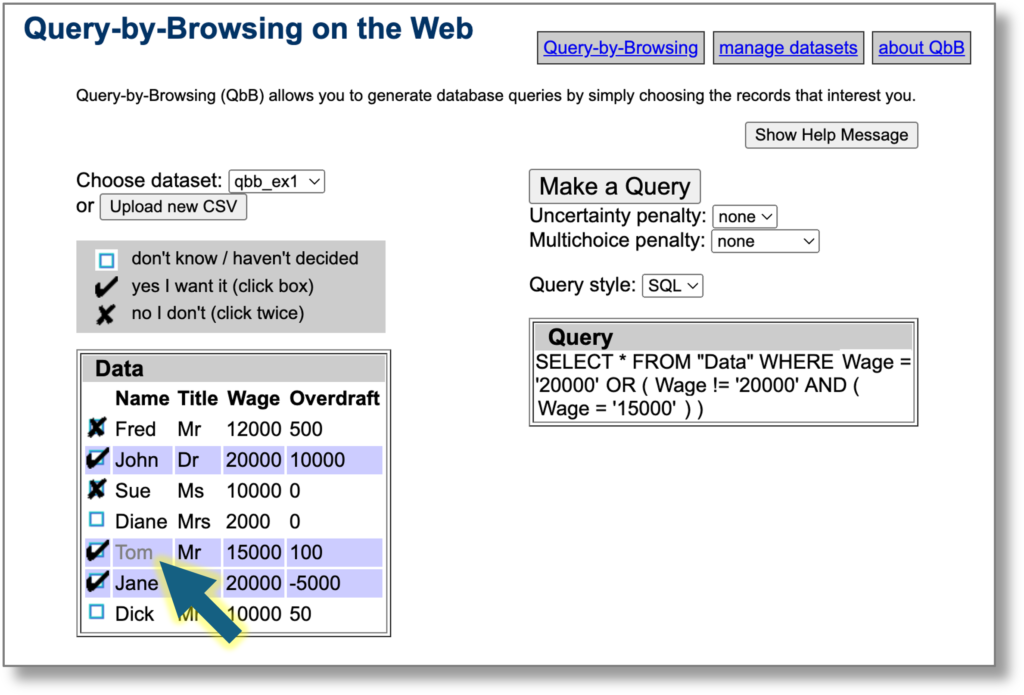intelligent transparent database access
Query-by-Browsing (QbB) is an intelligent database interface, that was originally envisaged more than 30 years ago, to highlight the potential danger of social, gender and ethnic bias in black-box machine learning systems, and to demonstrate how these dangers could be ameliorated through transparency and effective user interaction.
The basic idea is the user starts to select records that there are or are not interested in (marked (1) in the annotated screenshot below) and then, when asked (2) the system suggests a potential database query that agrees with the user choices so far. Crucially both the inferred query (3) and the records selected (4) are presented back to the user to make it easy to assess whether the inferred query is indeed what is wanted.
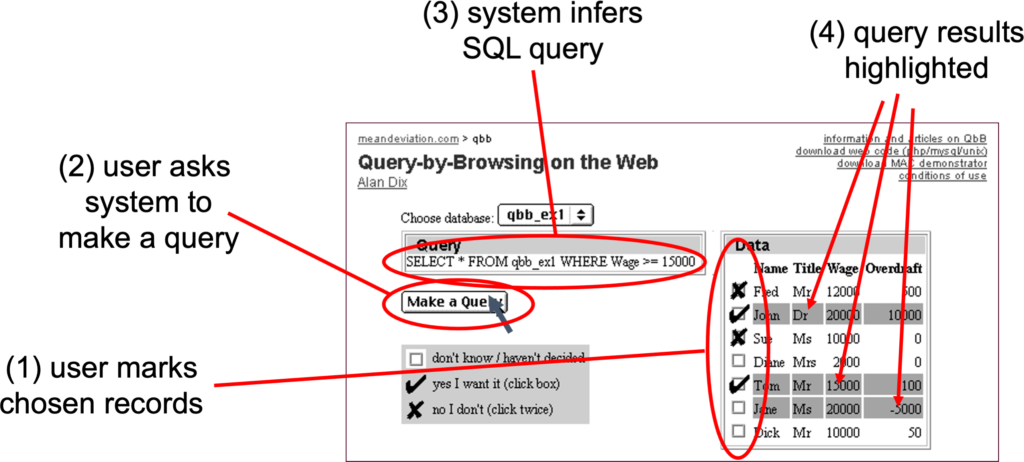
In the web demo you can experiment with one of the small example databases and also add your own CSV files. Any data you add is stored in your browser data and will be available when you revisit QbB so long as you don’t clear the browser data for the site.,
Under the bonnet, the positive and negative examples selected by the user are fed into a machine learning system, that generates a decision tree, which is then translated into an SQL query, as this is the most common database query notation.
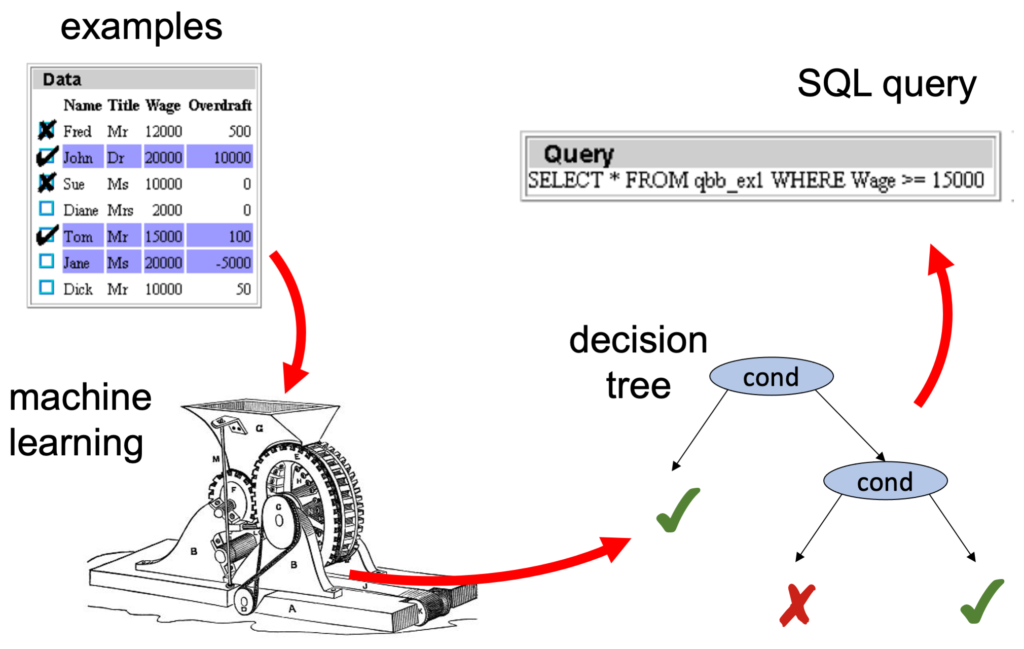
History and variants
There have been several variants over the years. The current web demo uses a variant of ID3, a machine learning algorithm that infers a decision tree, so is intrinsically more ‘explainable’ than many types of ML. This was the form initially proposed in the 1992 paper, which introduced QbB, however one variant also used a Query-by-Example style tableau and rules learnt using a genetic algorithm. A semantic web variant was also produced in the 2010s, but never published. Query-by-Browsing was also used as a case study in the introductory AI textbook that Janet Finlay and I published in 1996, and also features in the new edition, with is currently in press.

(A. Dix, 1992. Human issues in the use of pattern recognition techniques. In Neural Networks and Pattern Recognition in Human Computer Interaction Eds. R. Beale and J. Finlay. Ellis Horwood. 429-451.)
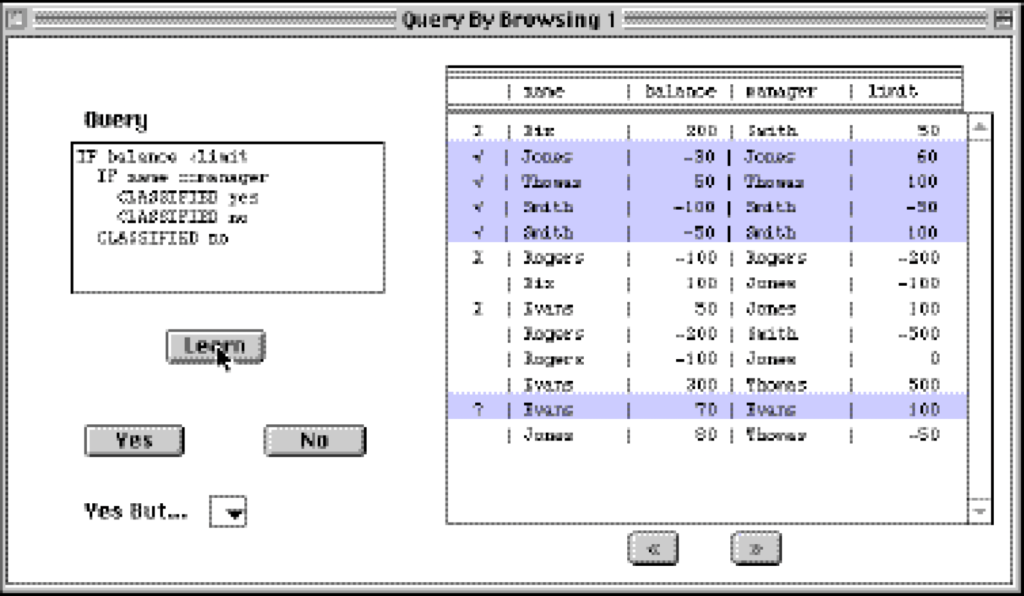
(A. Dix and A. Patrick, 1994. Query By Browsing. Proceedings of IDS’94: The 2nd International Workshop on User Interfaces to Databases, Ed. P. Sawyer. Lancaster, UK, Springer Verlag. 236-248.)
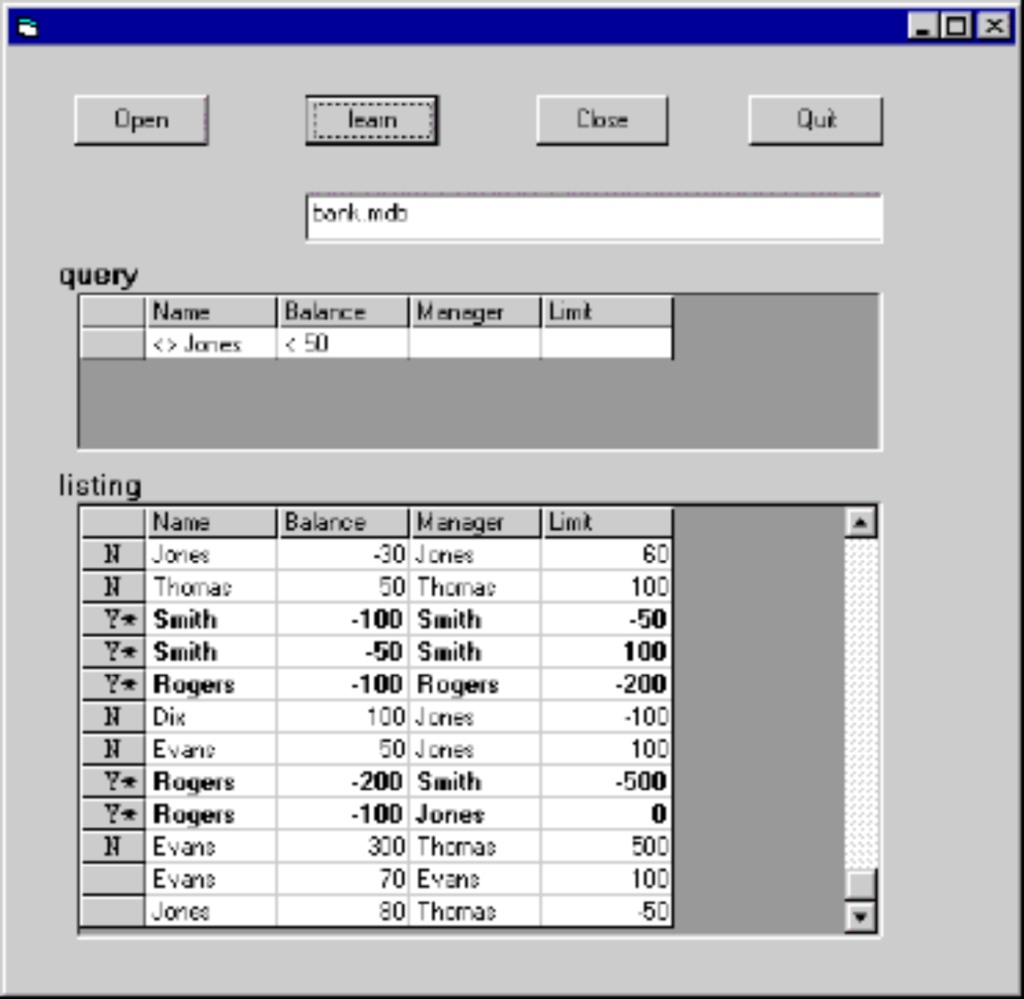
(A. Dix, 1998. Interactive Querying – locating and discovering information. Second Workshop on Information Retrieval and Human Computer Interaction, Glasgow, 11th September 1998.)
The first web version was created around New Year 2005, initially using a CGI backend written in C. This was later translated into PHP. The current web demo retains the look and feel of this 2000s web version, but as a single page web app with the machine learning running in Javascript. In addition, it allows the upload of the user’s own CSV file.
Bias and discrimination
As noted, the first envisionment of Query-by-Browsing was in a 1991 talk and later 1992 book chapter Human issues in the use of pattern recognition techniques, which was probably the first publication to highlight the potential dangers of gender, ethnic and social bias in black-box machine learning algorithms. It was written at the hight of excitement in AI around 1990, and just before the great ‘AI Winter’. At the time I thought that discriminatory uses of AI would arise within the next five years. In fact it took more like 25 years before these became a problem, so in many way the paper was far too early to be a useful warning.
The core idea of the dual list and query (extensional and intensional) representation in QbB was to help the user see if the machine learning was using a potential biased rule, that is what would now be considered explainable AI. The screen shot below shows an example of this using the web demo.

The web demo also allows you to switch between SQL and tree versions of the query.
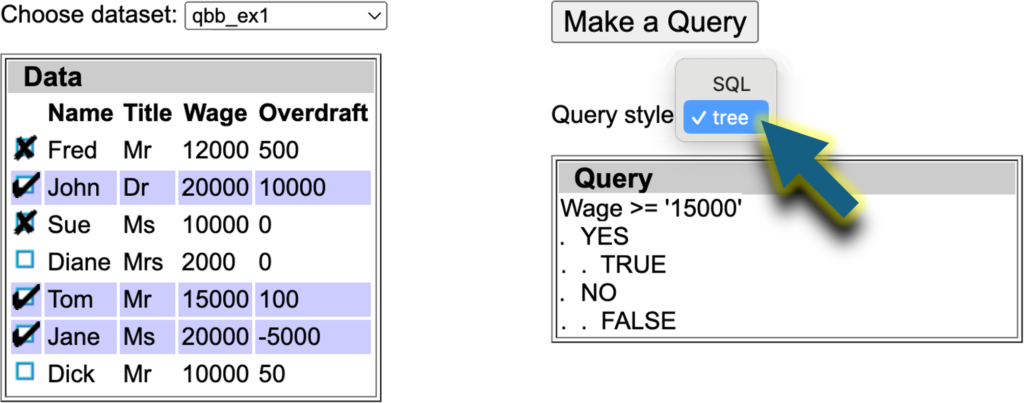
Local explanation
As well as the transparency of the query, you can explore the system query in more detail.
If you hover the mouse over a row in the table you can see the line of query choices that led to the row being selected or not.
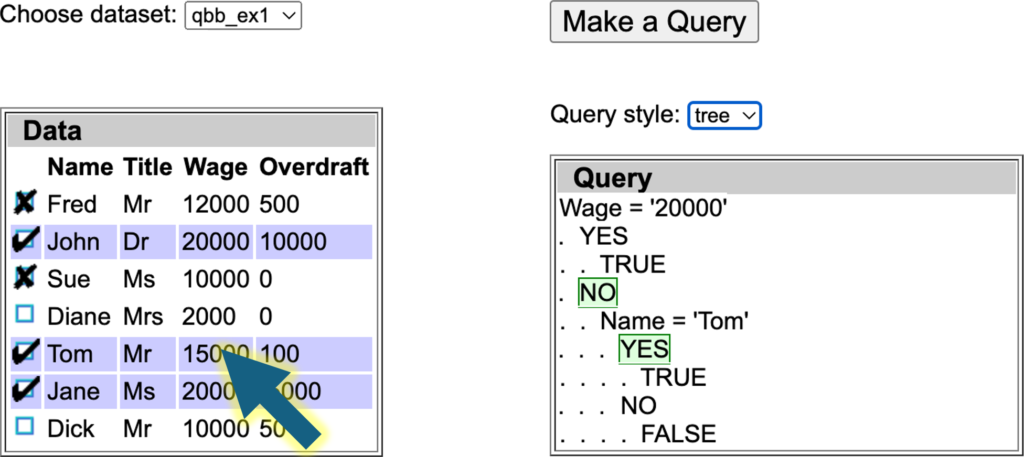
Similarly if you hover over part of the query, you can see the data roes that satisfy the branch of the query.
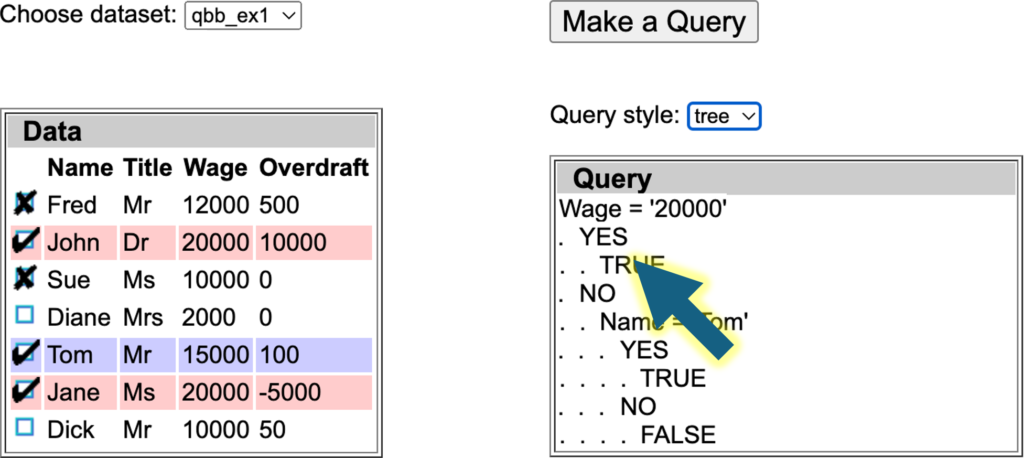
User Explanations
User explanations are when the user offers some guidance as to what it important either for data as a whole (global user guidance) or a specific example (local user explanations). The general AI-UI design principle is described in more detail in “Talking Back: human input and explanations to interactive AI systems”. QbB supports both, although to a limited degree, mainly as an proof of concept.
Global user guidance – Click row headers to toggle between important (red border), ignore (grey) or standard. The query refreshes taking into account these preferences . Columns marked ‘ignore’ are not used at all by the machine learning, whereas those marked as ‘important’ are given preference when it creates the query. In the screenshot below the Wage column is marked as important so the query uses this rather than a simpler query using names.
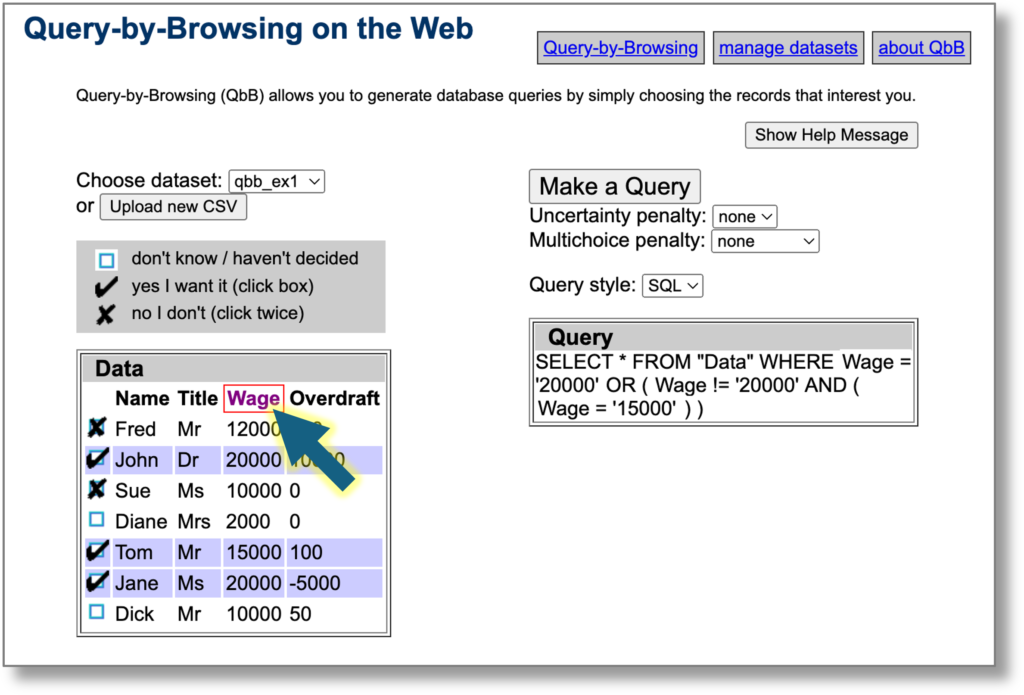
Local user explanations – Click data cells in individual rows to toggle between important (red border), not important (grey) or standard. This means that for this particular example the relevant field is more or less important. Note that is a local explanation, just because a field is important for this record selection, it does not mean it is important for them all. In the same example with the column headers all equally important, but the cell with contents ‘Tom’ annotated as unimportant (grey). The generated query does not use this value. However, note that while the algorithm does its best to follow the preferences, it may not always be able to do so.
